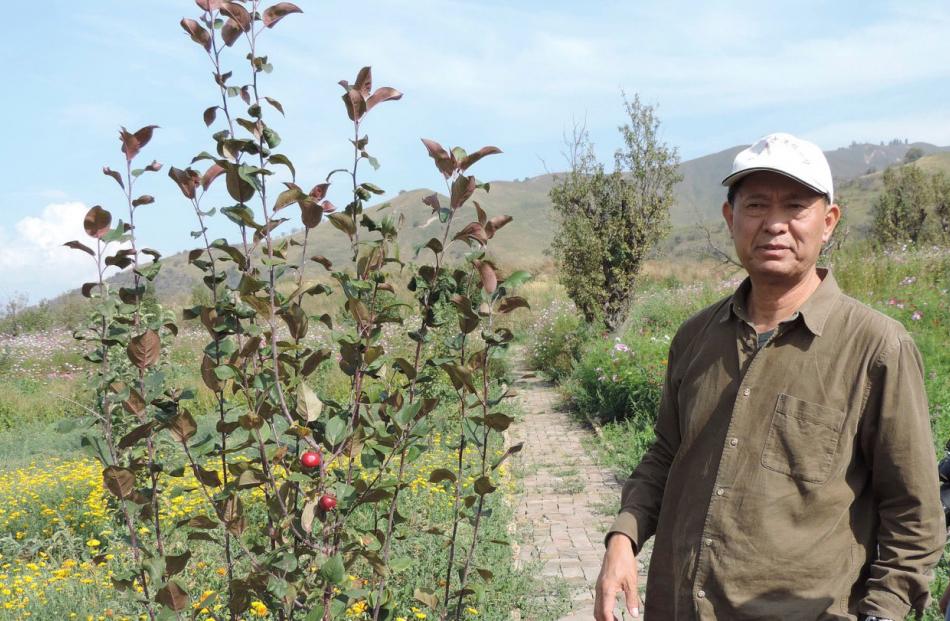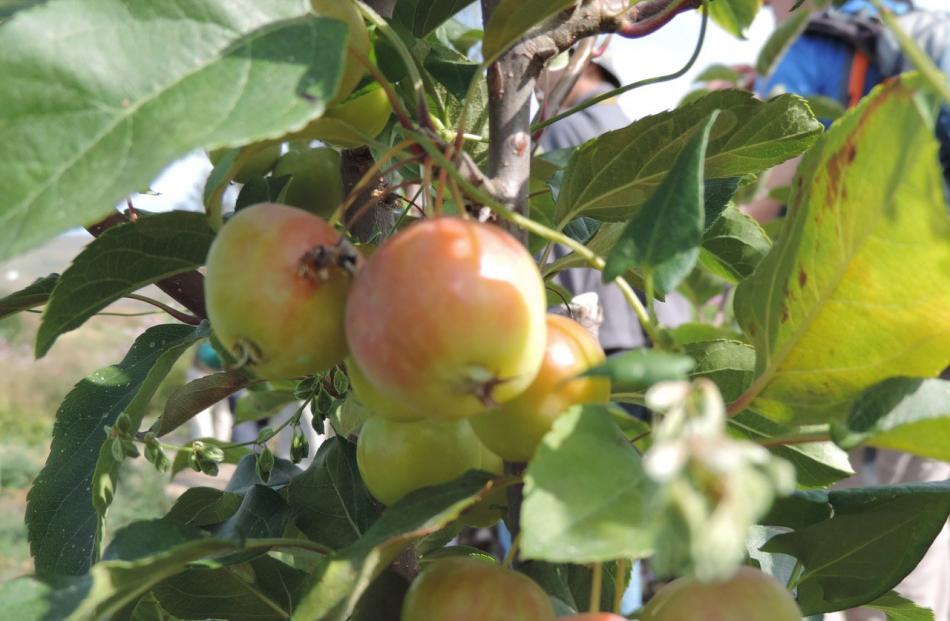Many of our crisp, juicy apple varieties actually originated in Central Asia, discovers Charmian Smith.
Wild apple trees (Malus sieversii) scattered over a hillside in the Ili Valley in Xinjiang, northwest China, are the primary ancestor of today's domesticated apples (M. pumilla), according to Prof Guan Kaiyun, deputy director of the Xinjiang Institute of Ecology and Geography, part of the Chinese Academy of Sciences.
This area in Central Asia around the Tian Shan mountains is also the origin of apricots, walnuts and cherries among other fruits that are now familiar around the globe.
Xinjiang is perhaps better known as part of the old silk roads that crossed Asia, linking China and the West until sea routes opened in the 16th and 17th centuries. It is one of 11 key areas in the world where unique plant species originated, plants that are now important globally.
Much of the Xinjiang province is occupied by the Taklamakan Desert, the second largest in the world, and the Gobi Desert borders it to the east. But in contrast to the rest of the arid province, the west-facing Ili Valley nestled in the Tian Shan mountains close to the Kazakhstan border has a cool continental climate and receives around 250mm of rain a year.
The wild apple trees on the hillside are old, most more than 60 and some up to 300 years old, but they started dying about four years ago.
Prof Guan and his team of scientists are trying to save them and to protect their genetic diversity. They are working with scientists in neighbouring Kazakhstan and Tajikistan, which have similar problems.
``There is enough molecular evidence that the original cultivars are from here compared with Kazakhstan, but they are having problems too,'' Prof Guan said.
Loss of ecological balance in the area, including over-grazing, is at the base of the problem. However, the recent arrival of the flat-headed borer has increased the speed at which the trees are dying.
Spraying insecticides by helicopter has failed to kill the destructive insect.
Under Prof Guan's guidance the institute is setting up a botanical garden in the area to help preserve the apple trees and other indigenous plants and to establish collections of various species, such as alliums, peonies and medicinal plants, as well as wild and domesticated apple and other fruit and nut trees. It recently received grants of 200 million ($NZ44.08 million) from the county and provincial governments.
The 35sq km Ili Botanical Garden will range from the river and wetlands, up the hillside slopes to about 1600m in the forested mountains and will take half a century to establish. Parts are already fenced and negotiations are ongoing to relocate people who use the area for seasonal grazing, he said.
But the first, urgent project is to save the wild apple trees.
There are about 400 cultivars of apple, pear, peach and apricot here, and whether they are good or bad cultivars they are important for germ plasm, Prof Guan says.
With the genetic resources of the wild parents new varieties can be bred that will allow them to adapt more easily to changing environments.
First aid for the beleaguered apple trees includes cutting off and burning dead branches which, in some cases, stimulates regrowth, and clearing weeds growing around them.
They are collecting fruit and seeds and growing them. Last year they raised a million seedlings. They are also collecting gene samples and storing DNA, but natural propagation is the preferred method, he said.
About 100 people, mostly soil scientists, entomologists, botanists and molecular scientists, are working on the project.
``I hope future generations will still have apples to eat.''
Near the apple trees they have planted a brilliant cacophony of flowers. They are to attract not only beneficial insects, but also visitors to the garden, who can then learn about the apple project.














